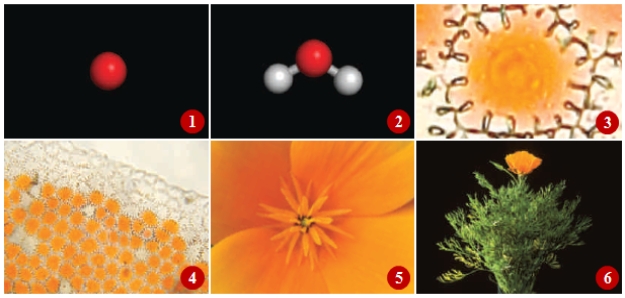A) animals
B) protists
C) fungi
D) plants
E) bacteria
Correct Answer

verified
Correct Answer
verified
Multiple Choice
Randomly selecting samples of experimental units from an environment can result in
A) sampling error.
B) blind testing.
C) evidence.
D) experimental design.
E) consensus.
Correct Answer

verified
Correct Answer
verified
Multiple Choice
Olestra chips did not cause cramps at a higher rate than normal chips. This is known as the ____ of this experiment.
A) hypothesis
B) prediction
C) control
D) conclusion
E) data
Correct Answer

verified
Correct Answer
verified
Multiple Choice
Which feature is not characteristic of all living organisms?
A) All have requirements for energy.
B) All must participate in one or more nutrient cycles.
C) All have ultimate dependence upon the sun.
D) All interact with other forms of life.
E) All must reproduce inside of organisms of other species.
Correct Answer

verified
Correct Answer
verified
Multiple Choice
The control in an experiment
A) makes the experiment valid.
B) is an additional replicate for statistical purposes.
C) reduces the experimental errors.
D) minimizes experimental inaccuracy.
E) allows for comparisons to the experimental group.
Correct Answer

verified
Correct Answer
verified
Multiple Choice
Match the following description to the most appropriate function, process, or trait listed below. -a process found only in plants, some bacteria, and some protists
A) inheritance
B) reproduction
C) photosynthesis
D) growth
E) homeostasis
Correct Answer

verified
Correct Answer
verified
Multiple Choice
Match the following description to the most appropriate function, process, or trait listed below. -a characteristic most organisms exhibit that tends to keep their internal environment within a range that favors survival
A) inheritance
B) reproduction
C) photosynthesis
D) growth
E) homeostasis
Correct Answer

verified
Correct Answer
verified
Multiple Choice
Which of the following is NOT true about the peacock butterfly?
A) The dark underside of their wings provides camouflage.
B) The spots on the wings may resemble owl eyes, which help deter predation.
C) The butterflies remain still when a predator is near so as not to draw attention.
D) The rapid movement of their wings produces a hissing sound.
E) A resting butterfly's closed wing resembles a dead leaf.
Correct Answer

verified
Correct Answer
verified
Multiple Choice
What is the correct ordering in the hierarchal levels of the organization of life, from the least inclusive to the most inclusive?
A) tissues, cells, population, organisms, and organs
B) molecules, cells, organs, tissues, and organisms
C) ecosystems, populations, tissues, cells, and organs
D) cells, tissues, organs, communities, and populations
E) cells, tissues, organs, organisms, and ecosystems
Correct Answer

verified
Correct Answer
verified
Multiple Choice
Figure 1.2
 -In the accompanying figure illustrating the levels of life's organization, what is represented in frame 3?
-In the accompanying figure illustrating the levels of life's organization, what is represented in frame 3?
A) atom
B) tissue
C) molecule
D) organ
E) cell
Correct Answer

verified
Correct Answer
verified
Multiple Choice
Match the following description with the most appropriate group listed below. -unicellular organisms of considerable internal complexity
A) bacteria
B) protists
C) plants
D) fungi
E) animals
Correct Answer

verified
Correct Answer
verified
Multiple Choice
Which concept represents the lowest degree of certainty?
A) hypothesis
B) conclusion
C) fact
D) principle
E) theory
Correct Answer

verified
Correct Answer
verified
Multiple Choice
Energy sources are needed for which of the following processes? I.reproduction II.growth III.development
A) I and II only
B) I and III only
C) II only
D) II and III only
E) I, II, and III
Correct Answer

verified
Correct Answer
verified
Multiple Choice
Match the following description with the most appropriate group listed below. -multicelled mobile consumers
A) bacteria
B) protists
C) plants
D) fungi
E) animals
Correct Answer

verified
Correct Answer
verified
Multiple Choice
Which group includes all of the other groups?
A) domain
B) order
C) family
D) genus
E) species
Correct Answer

verified
Correct Answer
verified
Multiple Choice
Which group is made up of almost exclusively decomposers?
A) plants
B) fungi
C) animals
D) bacteria
E) protists
Correct Answer

verified
Correct Answer
verified
Multiple Choice
Members of which prokaryotic domain are most closely related to eukaryotes evolutionarily?
A) animals
B) protists
C) fungi
D) bacteria
E) archaea
Correct Answer

verified
Correct Answer
verified
Multiple Choice
Four of the following characteristics are required for the life of an individual organism to continue. Which is the exception?
A) to maintain chemical uniqueness and organization
B) to respond to stimuli
C) to possess a genetic program to control cell processes
D) to reproduce
E) to evolve
Correct Answer

verified
Correct Answer
verified
Multiple Choice
Match the following description with the most appropriate group listed below. -unicellular eukaryotic producers
A) bacteria
B) protists
C) plants
D) fungi
E) animals
Correct Answer

verified
Correct Answer
verified
Multiple Choice
Homeostasis provides what kind of internal environment?
A) positive
B) tolerable
C) limiting
D) changing
E) chemical and physical
Correct Answer

verified
Correct Answer
verified
Showing 41 - 60 of 79
Related Exams